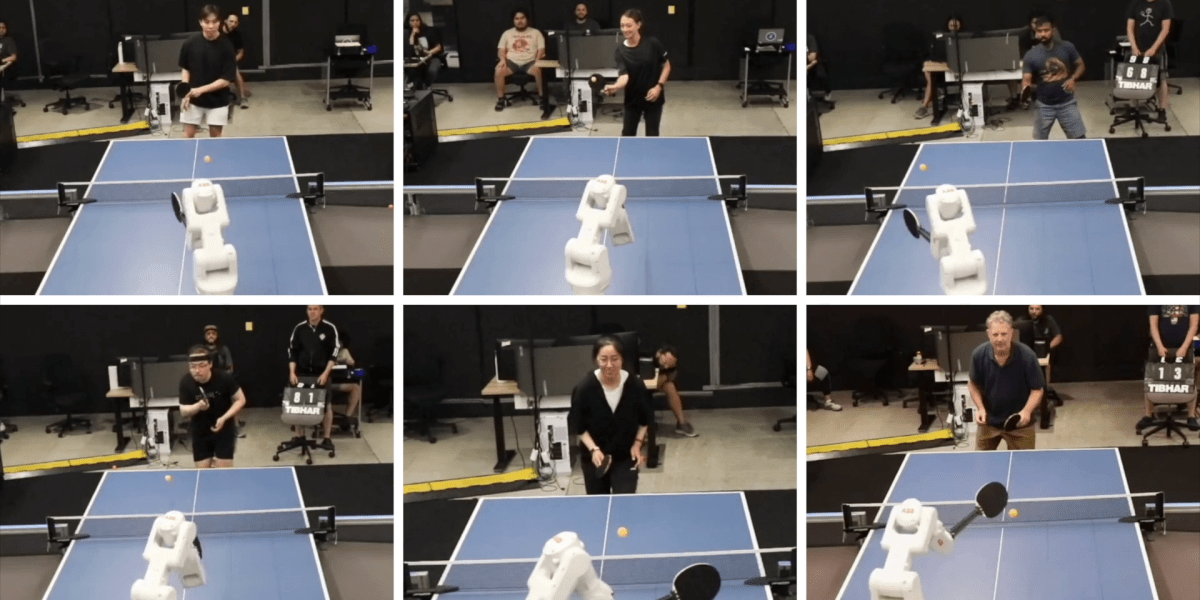DeepMind Develops Robot Capable of Defeating Humans in Table Tennis

Advancements in Table Tennis Robotics
The development of robotic technology in sports, particularly in table tennis, showcases significant achievements and ongoing challenges in the field. A recently introduced table tennis robot has made notable progress by outperforming beginner-level human players and achieving a win rate of 55% against amateur opponents. However, it still struggles against advanced players, losing all its matches in that category. This mixed performance highlights both the achievements and limitations of current robotics technology in competitive settings.
Impressive Achievements
Pannag Sanketi, a senior staff software engineer at Google DeepMind and the project’s lead, expressed surprise at the robot’s capabilities. He noted that just a few months prior, the team had estimated that the robot might not win against unfamiliar opponents. Its ability to outmaneuver even skilled players has proven to be a remarkable advancement in machine learning and robotics.
Key Accomplishments:
- The robot has successfully defeated all beginner-level human players.
- It has a competitive edge over 55% of amateur opponents.
- The ability to adapt its strategy showcases significant learning processes.
The Broader Impact of Robotics Research
The implications of this robotic advancement extend beyond mere gameplay. It is a significant step toward developing robots that can skillfully and safely perform tasks in various real-world environments, such as homes and warehouses. The research by Google DeepMind not only enhances sports technology but also paves the way for practical applications in everyday life.
Lerrel Pinto, a computer science researcher from New York University, noted the importance of integrating robot systems with human interaction. He emphasized that while the current table tennis robot may not be at a championship level, it possesses essential components that can lead to further improvements and refinements.
Key Challenges for Table Tennis Robots
To excel in table tennis, humans rely on specific skills that can be difficult for robots to emulate. These include:
- Hand-Eye Coordination: The ability to track the ball and respond effectively.
- Speed and Agility: Quick movement to react to opponents’ shots.
- Decision-Making: Making rapid choices based on the flow of the game.
To address these challenges, Google DeepMind’s researchers implemented a two-phase training approach. This involved:
- Computer Simulations: Initially, the robot was trained in simulated environments to develop basic hitting skills and refine its technique.
- Real-World Data Refinement: The robot was subsequently fine-tuned using data from actual gameplay, allowing it to continually learn and evolve its strategies over time.
This dual strategy has proven effective, showing that combining theoretical training with practical applications can lead to enhanced performance.
The Future of Robotic Sports
The progress in table tennis robotics reflects a larger trend in the integration of artificial intelligence and robotics into daily activities. As developers continue to push the boundaries, the potential for robots to engage in complex tasks alongside humans becomes increasingly viable. Advancements in techniques used in projects like this could potentially alter various industries, ranging from logistics to home management.
Overall, while the table tennis robot still has a long way to go to reach the levels of advanced human players, its development marks an essential step in the direction of innovative robotic systems that can perform diverse tasks in tandem with human users. The journey of this technology illustrates the potential for learning machines to enhance lives significantly in various facets of society.






